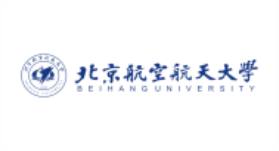There are hundreds of kinds of transducers, many of which are specified by the energy changes they accomplish. For example, piezoelectric sensors contain piezoelectric elements that produce motion when subjected to voltage, or electrical signals when subjected to strain. The latter effect can be applied to accelerometers, piezoelectric vibration pickers or strain gauges. Electroacoustic transducers can convert electrical signals into acoustic signals and vice versa. One example is a hydrophone, which responds to hydroacoustic waves and is useful in underwater acoustic detection. Photoelectric sensors react to visible light to produce electrical energy. Electromagnetic sensors form a large group, the main categories of which are differential transformers, Hall effect magnetic sensors, inductance sensors, induction sensors and saturation reactors. These work according to electromagnetic principles.
Electrical sensors can be classified as active or passive. An active transducer produces a current or voltage in direct response to a stimulus. One example is a thermocouple; Here, if the two connection points are at different temperatures, current will flow into a continuous circuit of the two metals for generating electricity. Passive sensors produce some change in passive electricity, such as capacitance, resistance or inductance, which can stimulate. Passive sensors usually require additional power. A simple example of a passive sensor is a device consisting of a segment of wire and a moving contact of a contact wire. The position of the contact determines the effective length of the wire and thus the resistance to which the current flows. This is the simplest version of what is called a linear displacement sensor or linear potentiometer. For practical applications, such transducers are wire-wound, thin-film, or printed circuits to allow long resistance to be formed within relatively small devices. The longer the resistance, the greater the voltage drop through the device; Thus, the position change is converted into an electrical signal.
The transducer can also produce a pneumatic or hydraulic output. Pneumatic systems communicate through compressed air. An example is a device in which motion is applied through a pivot system to a baffle that can move closer to or further away from a nozzle that emits a stream of air. The blocking force generated by the baffle will affect the amount of back pressure behind the nozzle, resulting in a pneumatic signal. Hydraulic systems tend to be similar in design to pneumatic systems, except that they use hydraulic (liquid) pressure instead of air pressure. The fluid principle, which applies to the interaction between two fluid flows, is also used to create transducers.

































